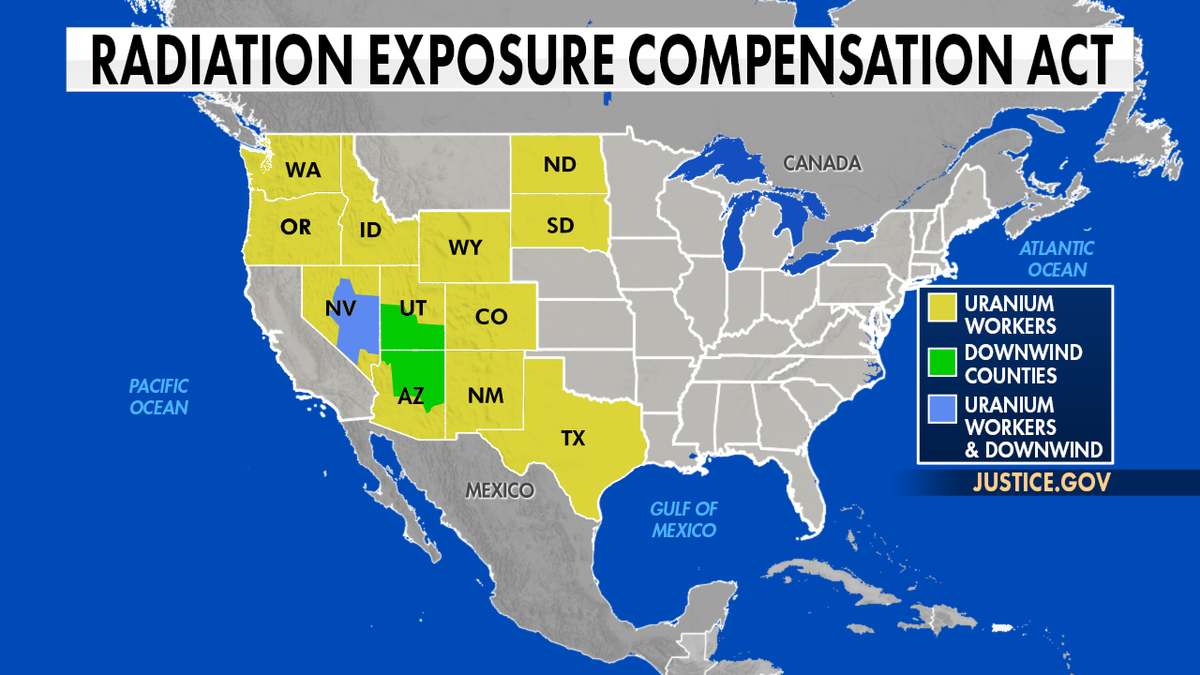
The Radiation Exposure Compensation Act has been a lifeline for some people and families exposed to toxins linked to decades-old nuclear weapons tests, but advocates say more people deserve compensation.
The law, first enacted in 1990 and set to expire this year, has provided payments for anyone who may have contracted certain cancers and illnesses as a result of the effort to build the first atomic bomb.
“This goes back to the Manhattan Project and all of the Cold War era, when the government’s nuclear program was really made possible by working people who went to the mines, who processed uranium. They’d been exposed to this nuclear radiation and not been compensated,” Sen. Josh Hawley, R-Mo., said.
From 1945 to 1962, the U.S. conducted nearly 200 atmospheric nuclear weapons tests. Thousands of workers were hired to mine for uranium throughout the West while others worked at test sites. The Radiation Exposure Compensation Act covered many of these workers but left out those who worked in labs and refineries in other locations.
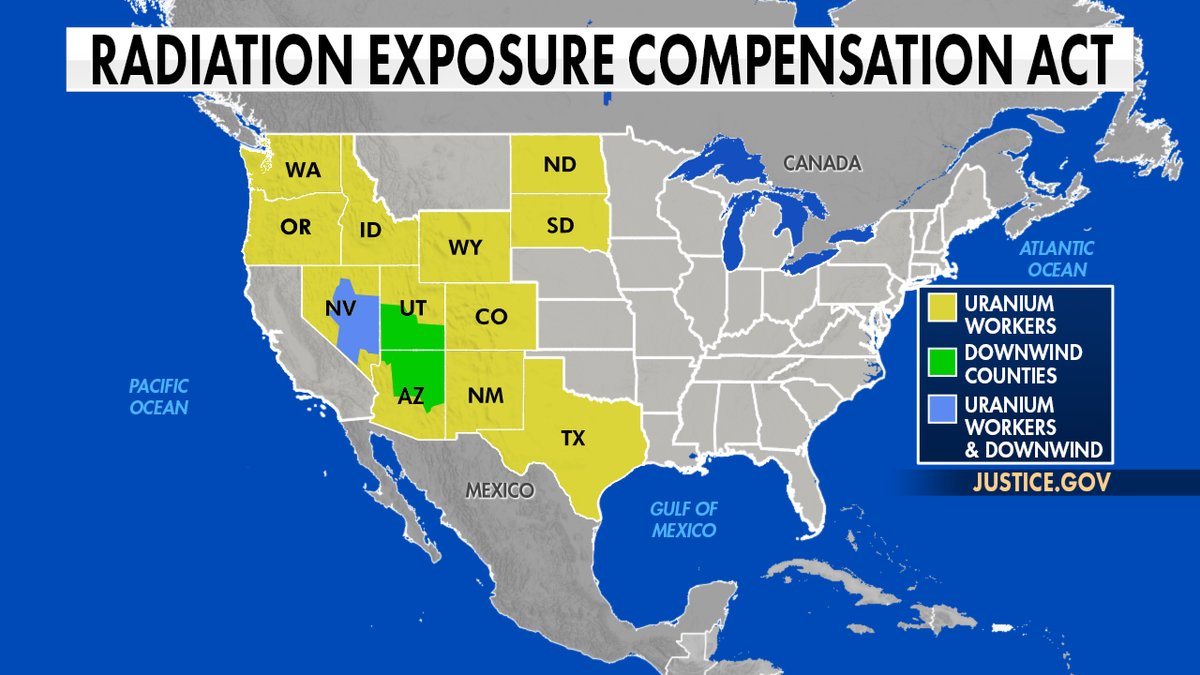
The Radiation Exposure Compensation Act applies to victims in certain states, but there’s a push to expand it. (Fox News)
“The victims have never been compensated by the government for the exposure the government put them through,” Hawley said.
Hawley is working to extend and expand the payments in places like Alaska, Kentucky, Tennessee and his home state of Missouri.
“We didn’t know the extent of the government’s nuclear processing or radiation tests,” Hawley said. “The government has exposed them. They’ve gotten sick because of it, and what this legislation does is, it helps them get the medical treatment and other cost help that they need in order to, if not be made whole, at least be compensated in some way for their sacrifice for this country.”
In St. Louis, the extent of exposure to Manhattan Project chemicals has extended far beyond the locations where refining and testing took place.
“After the uranium processing facility in St. Louis during the Manhattan Project era shut down, the government didn’t dispose of the waste properly or really at all,” Hawley said.
Documents revealed that workers took the chemicals to three separate sites over the years, and some of them leaked into a creek that flows throughout North County, St. Louis.
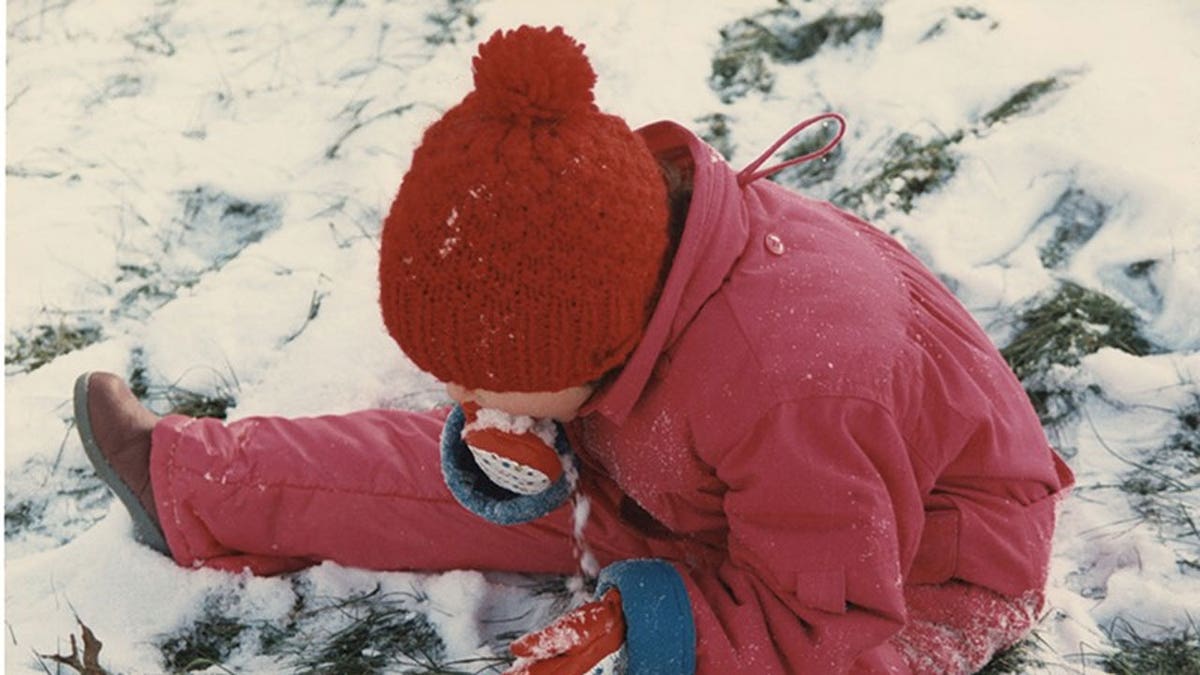
A child eating snow near Coldwater Creek in an undated photo. (Kay Drey Mallinckrodt Collection)
“I have lupus, and I also have psoriatic arthritis and some other autoimmune diseases,” Just Moms STL Founder Karen Nickel said. She grew up in North County and raised her kids in the area. She said they also have suffered from illnesses that she said were linked to radioactive waste in the area.
“Lupus is an environmental trigger. They do know that it is connected to some radiation,” Nickel said.
Missouri State Rep. Chantelle Nickson-Clark, a Democrat, also grew up in North County. She’s a two-time breast cancer survivor from a family with a history of cancer, but she said she believed environmental exposure could have played a part in her illnesses.
“As data reflects, there’s nothing concrete. Coming from a family where cancer just runs all through my family, we believe that [chemical exposure] is a contributing factor,” Nickson-Clark said.
SEN HAWLEY URGES MORE COMPENSATION FOR RADIATION EXPOSURE AS PARTIAL SHUTDOWN DEADLINE LOOMS
Both Nickel and Nickson-Clark lived near Coldwater Creek. Testing over the years has shown radioactive chemicals are present in the water and have spread to creek beds along the waterway.
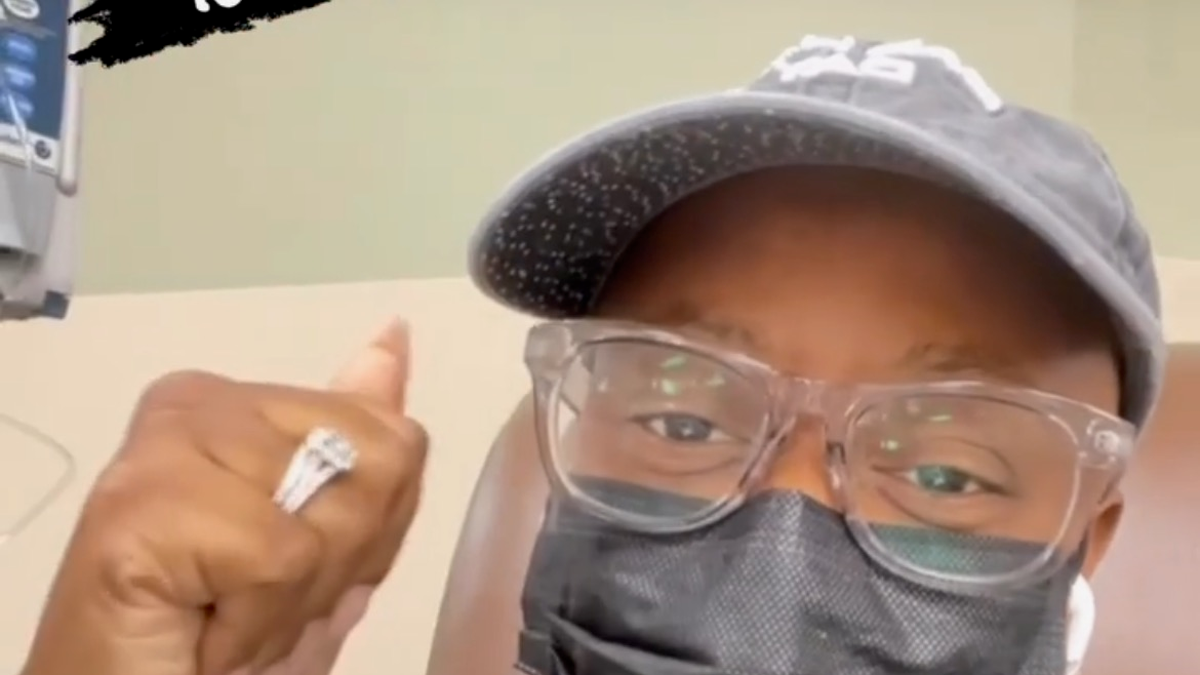
State Rep. Chantelle Nickson-Clark of Missouri said she believed chemical exposure may have contributed to her family’s cancers. (Chantelle Nickson-Clark)
“This is no small creek. This is more like a little river,” Nickel said.
A 2019 health assessment from the Centers for Disease Control and Prevention determined exposure to the creek could have resulted in elevated risks of developing certain cancers.
“More testing needs to be done,” Hawley said. “I’ve been saying for years now that the Army Corps needs to test all along the floodplain.”
Before the danger was determined, the creek was a frequent playground.
“Back in the 1950s, folks went out and built homes there. It was a nice suburban area,” Hawley said.
Nickel said her parents chose to live in the neighborhood because it was a good place to raise a family.
“There were a lot of children in the neighborhood, and kids spent sunlight to sunset in the park there and playing in the creek,” Nickel recalled.
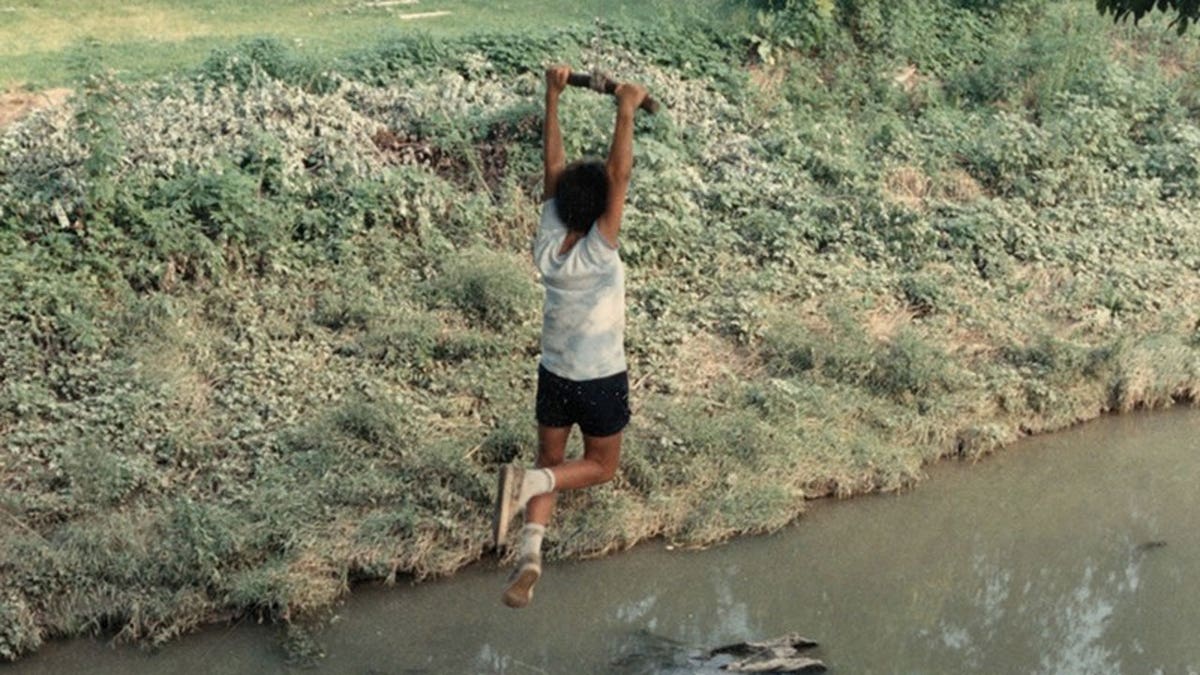
A child swinging near Coldwater Creek in an undated photo. (Kay Drey Mallinckrodt Collection)
Several decades later, Nickel said she and her family have not been alone in suffering from illnesses.
“It’s just person after person after person that have passed away from rare cancers and whatnot, the amount of illnesses and autoimmune diseases, and it’s astronomical,” Nickel said.
Nickel and her neighbor, Dawn Chapman, have worked together to learn more about radioactive waste in the area. They founded their organization, Just Moms STL, to inform others of the toxic sites near their homes.
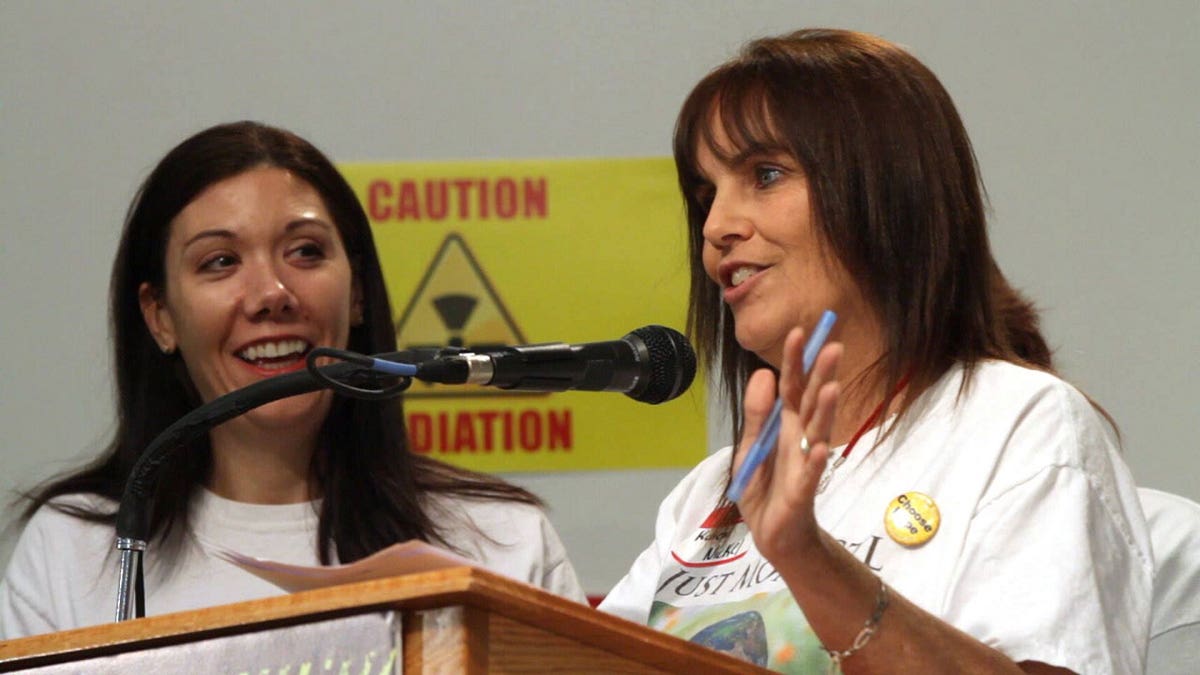
Karen Nickel, right, has pushed for greater awareness of the toxic sites near certain homes. (Dawn Chapman)
“Unlike Karen, I didn’t grow up next to this,” Chapman said. “It was staggering to see how many people were ill, and then again, be able to look back in my community where I grew up, there is none of that.”
Chapman and Nickel both bought homes near one of the sites where the radioactive chemicals would eventually end up. Neither of the women said they knew the waste was there until an underground fire began burning near the site.
“The longer this fire burns, the more unstable the ground becomes where the fire is, which gives it the ability to move, and so, we are racing up against a clock,” Chapman said.
She added that she first learned about the fire at the West Lake Landfill in 2013.
“I had been smelling something for a little while,” she said, “kind of like when you cut an onion. That’s what our eyes were doing. That’s what it felt like, like this very intense burning. It was like, ‘Oh, my God. What’s happening to me?'”
Chapman said she called the Natural Resources Department.
“He started talking about the Manhattan Project and there being radioactive waste, and he was concerned the fire was going to hit it,” Chapman said.
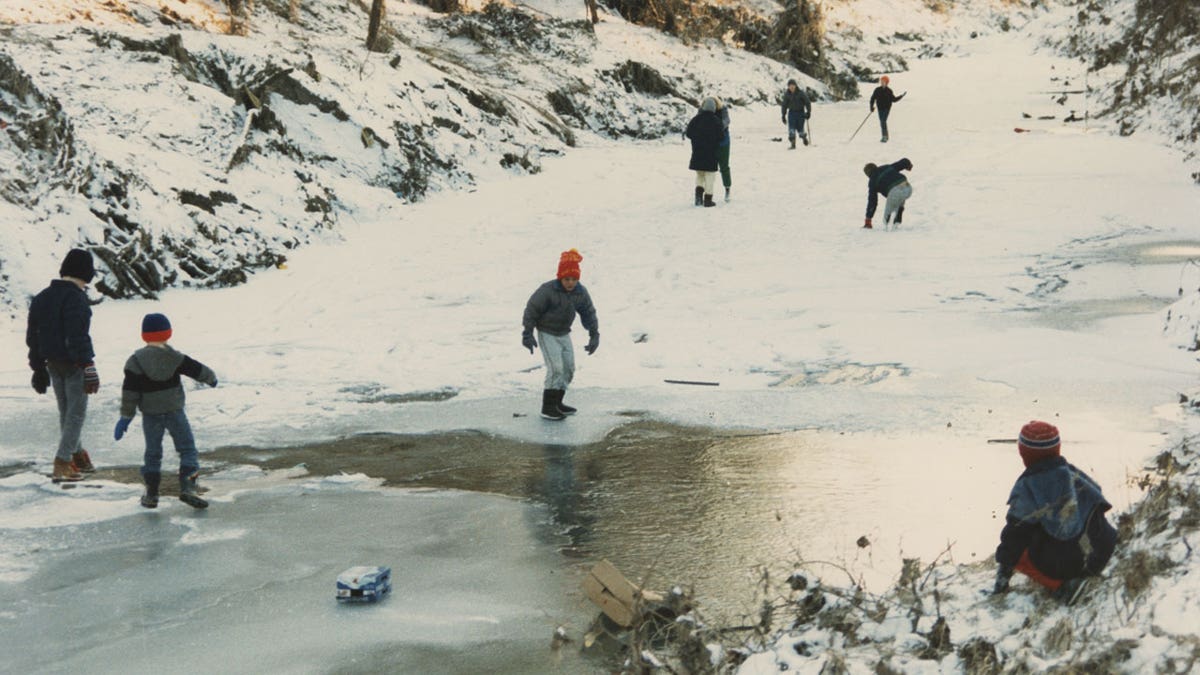
Kids playing near Coldwater Creek in an undated photo. (Kay Drey Mallinckrodt Collection)
The fire has been burning for more than a decade. The Environmental Protection Agency (EPA) reported that crews installed an isolation barrier to keep the waste separate from the fire.
“The system that they installed is able to capture some of … the smoke and stuff and have the isolation barriers run through a treatment system. So, there’s no human exposure at this time,”Bob Jurgens, EPA Region 7 Superfund and Emergency Management division director said.
CLICK HERE TO GET THE FOX NEWS APP
Still, many residents and lawmakers have questioned why the cleanup of sites like the West Lake Landfill and Coldwater Creek has taken so long. They also have continued to call for compensation for those who’ve become sick after living near these sites.
“The government has done all of this. It has imposed these hardships on these working people,” Hawley said. “These working folks, they are the heroes of this story.”






